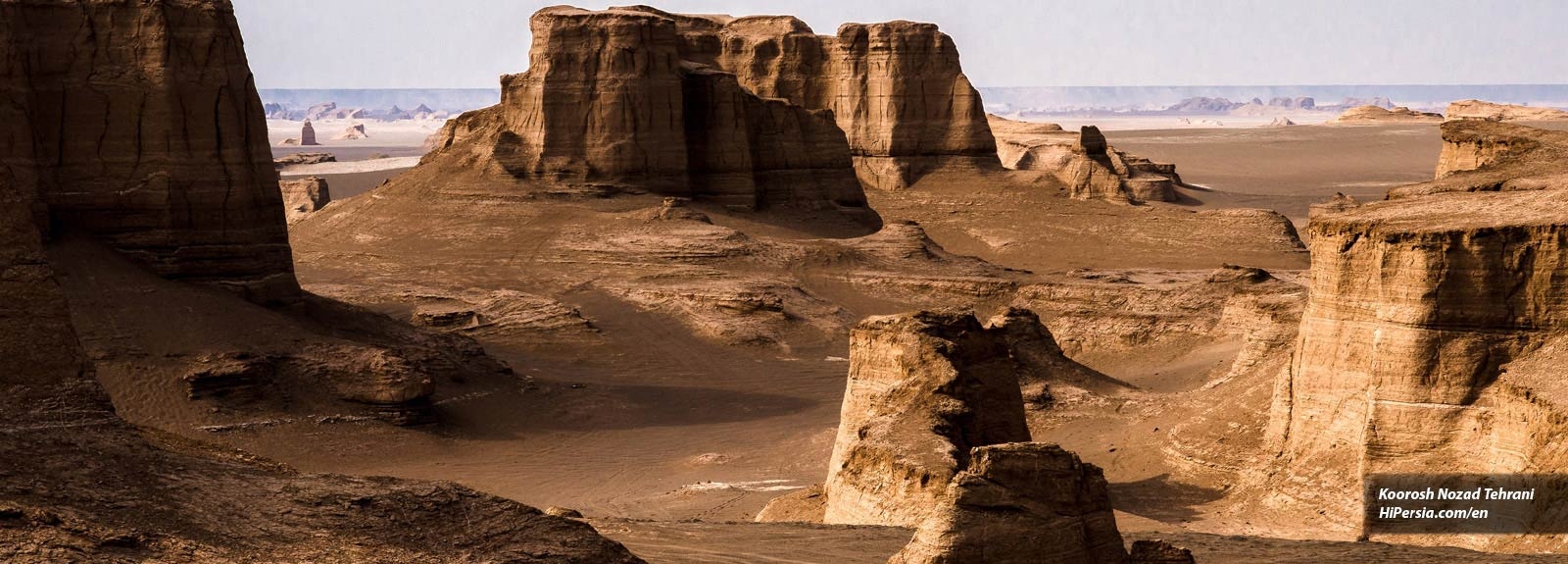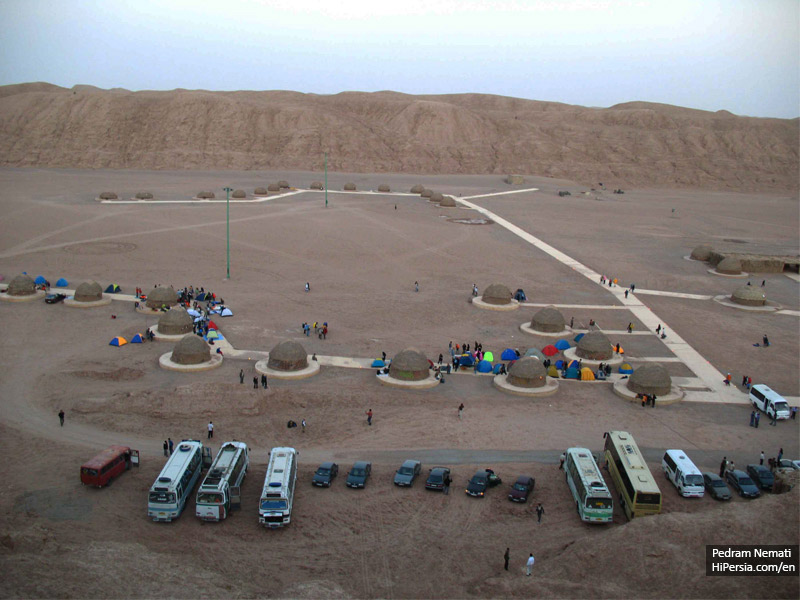



Deserts make up about a quarter of Iran's land. The Dasht-e Lut with an area of over 40,000 square kilometers, is one of the most famous deserts of Iran.
The Lut Desert, or Dasht-e-Lut, is located in the southeast of Iran, an arid continental subtropical area, notable for a great variety of spectacular desert landforms. The Lut Desert is placed between the provinces of South Khorasan, Sistan and Baluchestan, and Kerman. The Lut Desert is the world's 27th-largest desert, inscribed on UNESCO's World Heritage List. The catchment area of Dasht-e-Lut is extended to about 175,000 square kilometers, which is about 10 percent of Iran's land. In the Persian language, ‘Lut’ refers to bare land without water and devoid of vegetation.

The Lut Desert is situated in an interior basin surrounded by mountains, so it is in a rain shadow and coupled with high temperatures. The Lut Desert has experienced Earth’s highest land surface temperatures between 2003 and 2009. The hottest satellite reading of ground temperature was recorded in 2005 at the Lut’s Gandom Beryan with a temperature of 70.7 °C (159.3 °F). The dry, rocky, dark-colored lands and dark pebbles, help make Iran’s Lut Desert the hottest place on Earth. It's interesting to know some portions of the Lut Desert, there is no chance to live, even for Bacteria.

The Lut Desert is divided into three geographic units: North Lut, Central Lout, and South Lut. The most alluring portion of the Lut Desert is the Central Lut. In terms of geomorphology, Central Lut is divided into three main parts: Pediment, Kaluts (Yardangs), and dunes. The Pediment is situated in the south of the Shahdad region with a width of 5 to 10 kilometers, in strips, and covered with sand, silt, and salt.
The Kaluts or Yardangs, are known as an unbeatable Natural Phenomenon of the Lut Desert. The Shahdad region, where holds the stunning and beautiful Kaluts, is the only Iran UNESCO natural world heritage site. Kaluts are bedrock features carved and streamlined by the dual action of wind abrasion of dust, sand, and deflation, which is the removal of loose material by wind turbulence. The most prominent wind that eliminates the walls of the Kaluts is the 120-day wind of Sistan. The Kaluts region is located 43 kilometers from Shahdad and has an average width of 80 km and an average length of 145 kilometers. Due to the appearance of the region, the Kaluts is known as the world’s largest cloddish town. Because of the shape of Kaluts, this landscape has been titled the imaginary city.

The dunes are situated in the south of central Lut. The height of these dunes is up to 480 meters. To reach the dunes, you'll need to do a tour with a 4WD and an experienced guide.

Nabkha is an astonishing natural phenomenon in the Dasht-e Lut. There is a type of Tamarisk tree 20 kilometers from the Shahdad region, which is located in the desert pots. Nabkha is a result of the interaction of wind erosion, moisture of the region, and vegetation cover, so the existence of a plant in the way of the airflow, causes the sand to accumulate at the bottom of the plant and as a result, a dune will be created with a crown of vegetation and sometimes they reach 10 meters in length, While the height of the tallest Nabkha in the desert of Africa is hardly reaching three meters.

Kalshour River or Shor river (salty river) is the only permanent river in the heart of the Lut Desert, which is full of water over the year. Kalshour River is another landmark of the Lut desert in Kerman province. The river is highly acidic due to the passage of desert areas, so avoid touching the river water seriously.

The Shafiabad village is located on the road of Nehbandan-Shahdad. The village includes culture, traditions, local cuisine, and handcraft that will attract tourists to the area. The proximity of this village to the Kalut of Shahdad made the village the center of this eco-museum. One of the other tourist attractions of the village is the Shafiabad caravanserai that dates back to the Qajar era.

If you intend to travel to the Lut Desert, you can accommodate in the Kalut Local House, Kavir Ecolodge, and Vakilabadi traditional house. Otherwise, you can go to the Shahdad Desert Camp, located 10 kilometers from the Shafiabad village, to cast up your tent along the flat spot provided there and sleep under clear skies crowded with stars.

Sirch village is a beautiful Paradise in the heart of the desert. The lush and beautiful paradise in the hot and burning desert seems somewhat outlandish, but by traveling to the Sirch Village, you can experience cold weather just a few kilometers far away from the hottest part of the world. Only in this area, you can experience the possibility of snow near the hot desert. The Sirch village located 80 kilometers from Kerman city, and you can get there via the Kerman-Sirch road or Shahdad-Sirch road. The most prominent tourist attractions of the village are the old Cedar with over a thousand years old, which has been inscribed on Iran's natural heritage, a hot spring with impressive therapeutic properties, and the biggest stone tunnel in the Middle East. As well as, you can buy Pomegranates from the village in autumn.

The best time to have an extraordinary journey to the Lut Desert is in Spring (between April to May) and Autumn. To benefit from the picturesque landscape of Kaluts and marvel at its magnificent beauty, we highly recommend you to get there at the beginning of the day or sunset.

The distance from Kerman to the Kaluts of Shahdad is about 220 kilometers, and it takes about three hours via Nehbandan–Shahdad road. You can have a day trip excursion from Kerman to this magnificent region by HiPersia desert tours. Although this area is safe, you'll need to travel with an experienced guide. It is necessary to know, on the way to Kaluts, there isn’t any restaurant and shop unless you stop at Shahdad city. This journey through the Lut Desert sets in the best of culture and adventure in an energetic day.

![]() More Iran deserts are listed below:
More Iran deserts are listed below:






“Oh! Squander not this breath that Heaven hath lent thee, Nor make too sure another breath to borrow!’” Khayam